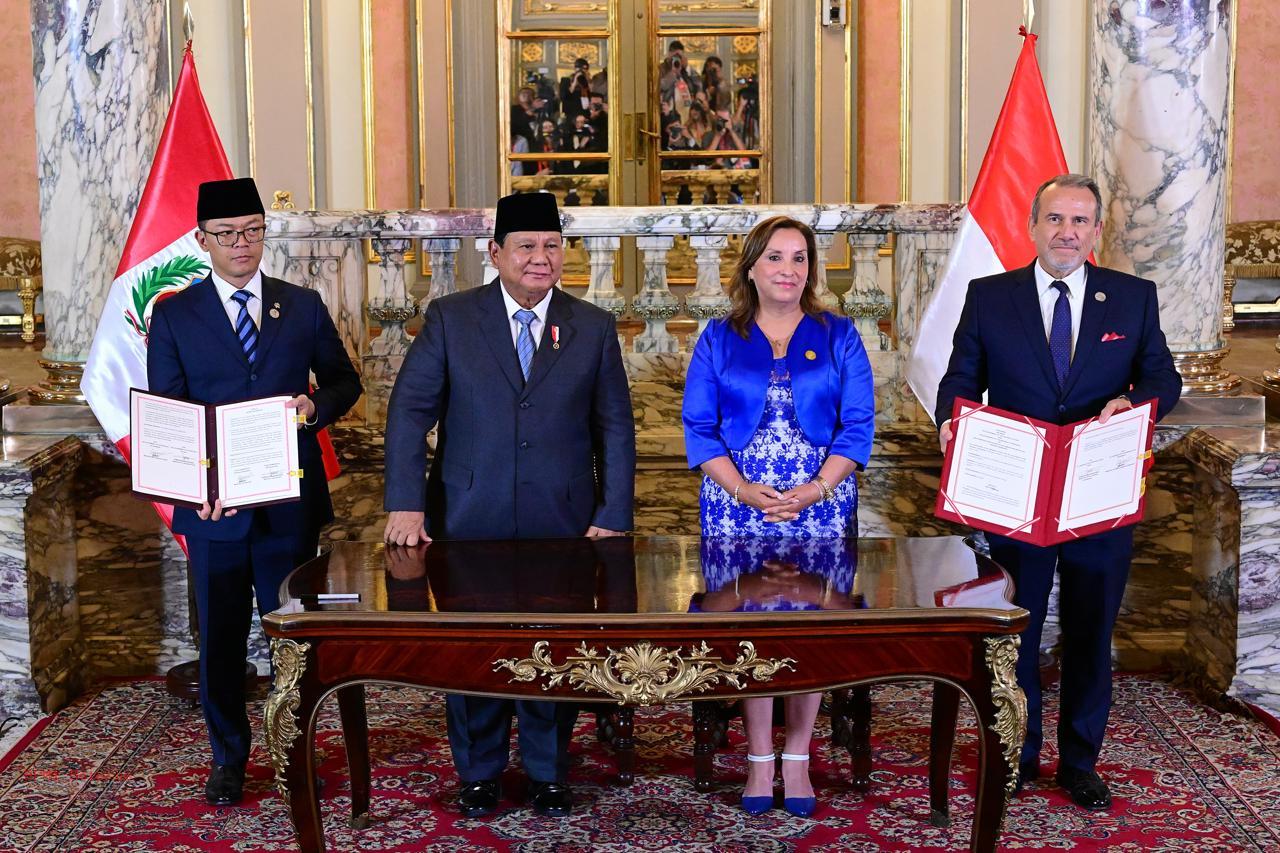The recent signing of the Indonesia Peru free trade agreement marked a breakthrough in Indonesia’s trade diplomacy. Held on August 11, 2025, in Jakarta, this landmark deal between Indonesia and Peru is expected to boost exports, diversify partnerships, and deepen economic cooperation. The agreement, known as a Comprehensive Economic Partnership Agreement (CEPA), covers vital sectors such as agriculture, fisheries, mining, energy, and defense.
This article explores the drivers behind the Indonesia Peru free trade agreement, its implications for exporters and consumers, and the strategic significance for both nations.
Bilateral Trade Gains Momentum with Indonesia Peru Free Trade Agreement
Indonesia and Peru have agreed to enhance trade and investment relations through their new Indonesia Peru free trade agreement. Under the CEPA, both countries are eliminating or reducing tariffs across key sectors. Indonesia is set to gain improved access for goods such as automotive parts, footwear, textiles, and biodiesel components. Peru, in turn, will benefit from expanded access for its agricultural and fisheries exports like blueberries and seafood.
In 2024, Indonesia exported approximately US$331.2 million worth of goods to Peru and imported about US$149.6 million in return. The agreement aims to significantly increase these figures, leveraging tariff reductions, trade facilitation measures, and regulatory cooperation to lower barriers to market entry.
Why the Indonesia Peru Free Trade Agreement Went Viral
The Indonesia Peru free trade agreement made headlines across media and diplomatic channels for several reasons:
- It was signed during the first official visit to Indonesia by Peru’s president, Dina Boluarte, highlighting its diplomatic importance.
- The deal represents Indonesia’s strategic effort to pivot toward Latin American markets amid global shifts in trade dynamics.
- For Indonesian manufacturers and exporters, the agreement offers new opportunities in a region with growing appetite for Southeast Asian goods.
Economic and Business Implications
Stronger Export Prospects for Indonesia
For Indonesian exporters, the Indonesia Peru free trade agreement opens lucrative new avenues. Sectors like automotive parts, footwear, electronics, and agro-commodities could see increased demand in Peru if tariffs are lowered. This diversification reduces reliance on traditional markets and spreads trade risk.
Boost for Peruvian Exports
Peru’s agricultural sector—particularly producers of blueberries, grapes, and fish products—stands to benefit significantly. The agreement allows these goods to enter Indonesia with fewer barriers, potentially increasing market share for Peruvian exporters in Southeast Asia.
Investment and Private Sector Linkages
In addition to trade flows, the deal may catalyze new joint ventures and investments. Indonesian companies might explore Peruvian mining or energy projects, while Peruvian firms could consider industrial or logistics operations in Indonesia. The agreement also lays a foundation for regulatory convergence and better investor protections.
Strategic and Geopolitical Dimensions
Beyond economics, the Indonesia Peru free trade agreement signifies Indonesia’s strategy to broaden its trade network beyond Asia and the Pacific. It showcases Jakarta’s aspiration to play a larger role in South–South cooperation. The deal also strengthens Indonesia’s global profile, reinforcing its leadership in ASEAN and its engagement in intercontinental trade diplomacy.
Things to Watch Going Forward
- Implementation timing and tariff schedules. Businesses will need clarity on when tariff reductions take effect and which goods qualify.
- Sanitary and phytosanitary requirements. For agricultural products, especially from Peru, meeting Indonesia’s import standards will be essential.
- Regulatory alignment and dispute resolution mechanisms. These will affect how smoothly trade and investment flows develop.
- Potential for further Latin American agreements. This CEPA could pave the way for similar deals with other countries in the region.
Conclusion
The Indonesia Peru free trade agreement marks a pivotal moment in Indonesia’s trade trajectory. By signing a CEPA with Peru, Indonesia is not only unlocking new market opportunities but also forging stronger geopolitical and economic ties in South America. For businesses and policymakers, the challenge will be to capitalize on these opportunities through timely implementation, regulatory clarity, and active engagement across sectors.
Read More






 Thursday, 27-11-25
Thursday, 27-11-25







